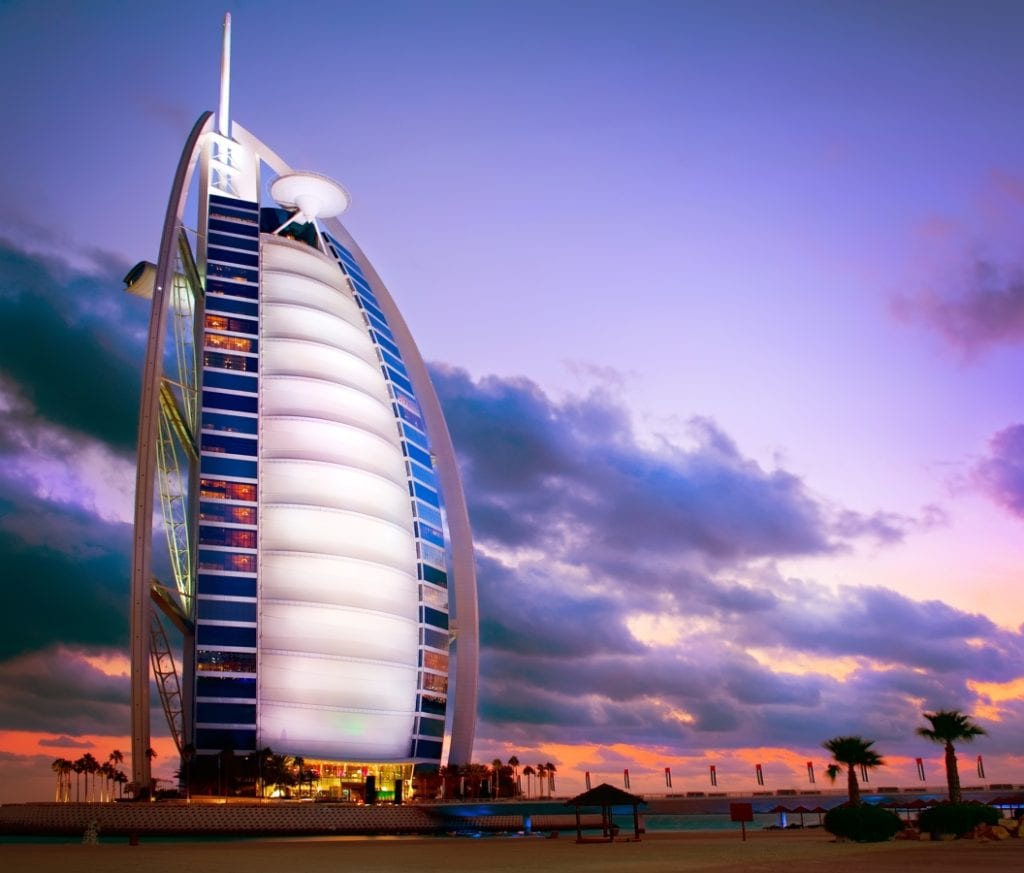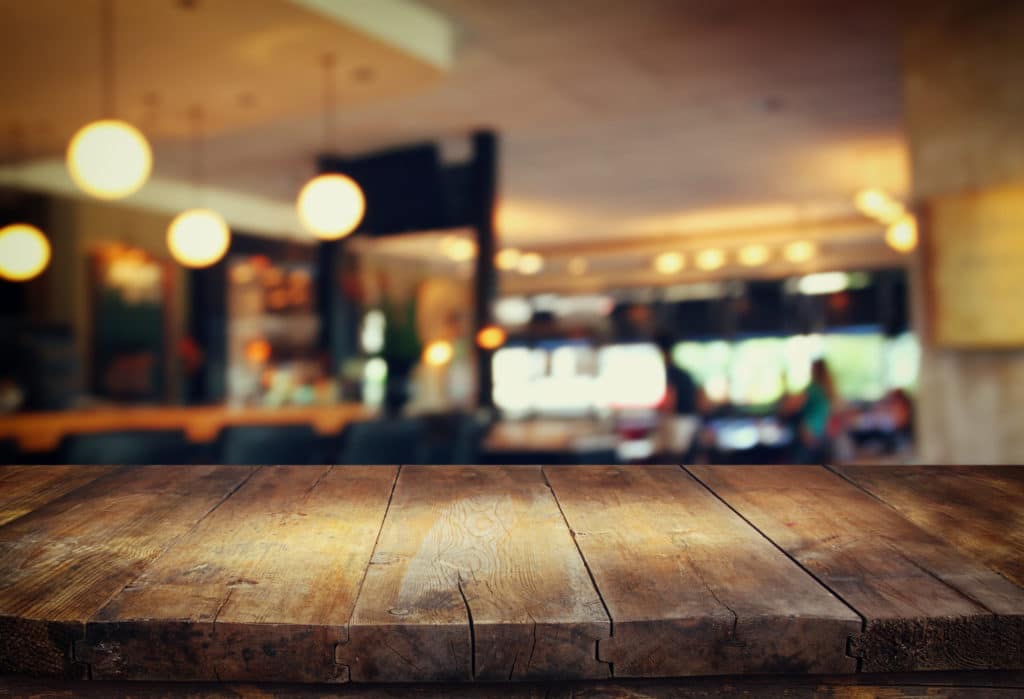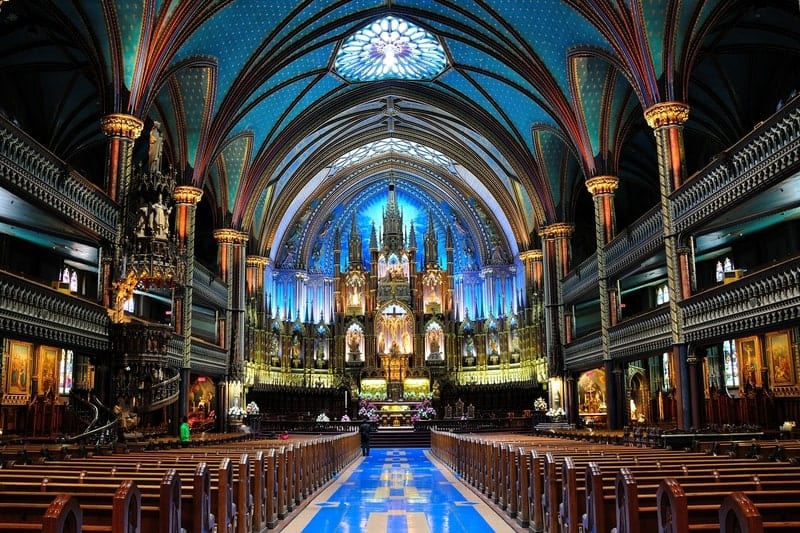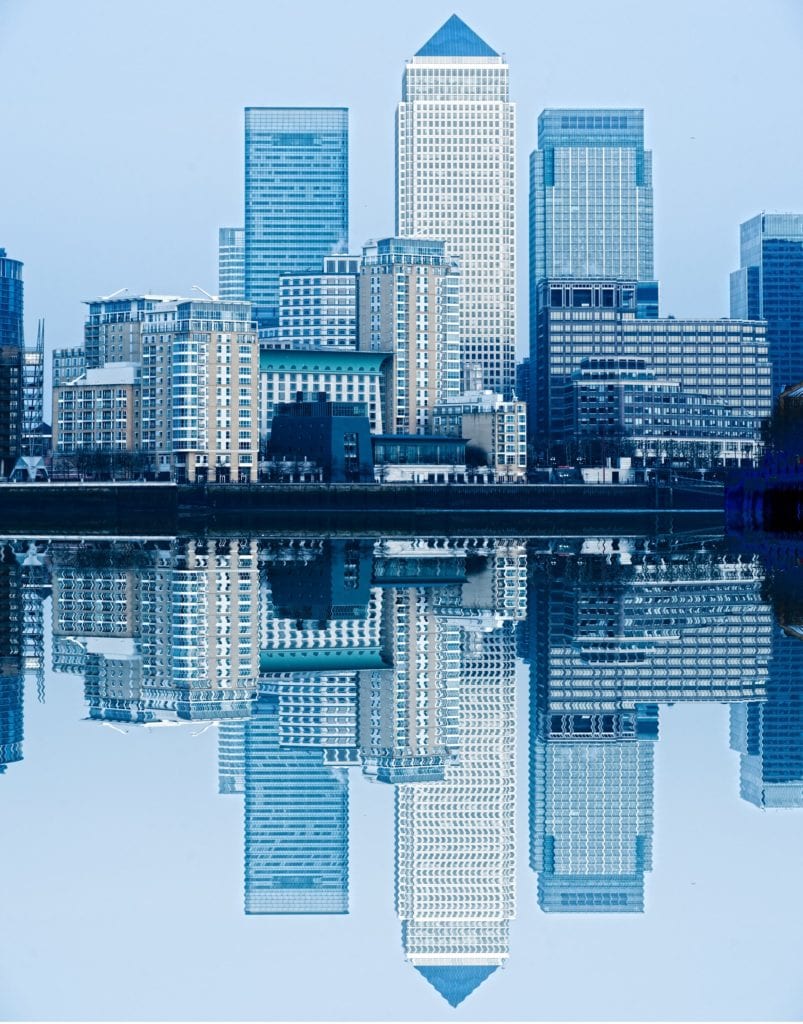Images of luxurious hotels, secluded resorts or breathtaking mansions we see on social media networks only offer a glimpse into the world of property and real-estate photography.
Producing high-quality images of houses, villas and other architectural structures may seem easy to beginners who haven’t fully grasped this complex and challenging field of photography.
Having a professional photography kit makes the process of photographing properties somewhat more accessible, which is the reason why, in this article, we are going to take you through all essential pieces of photography equipment every aspiring property photographer must have.
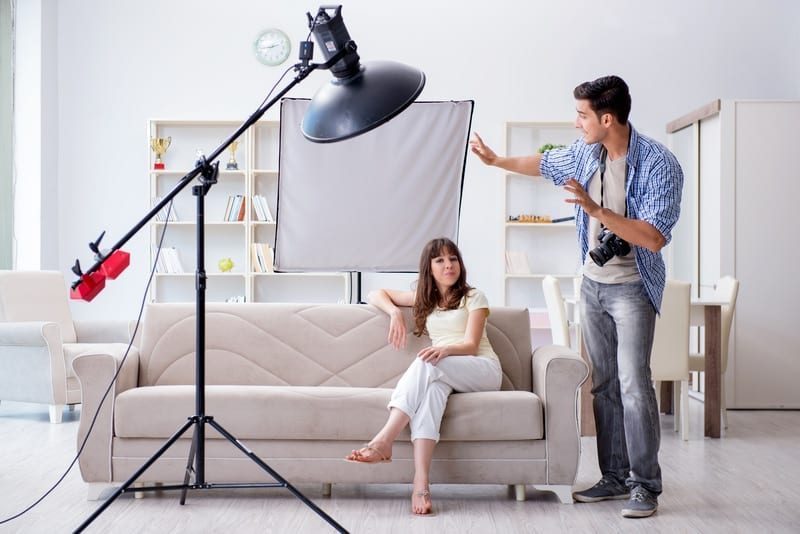
Taking the First Steps as a Property Photographer
Being a property photographer is impossible without understanding the core concepts of photography.
For instance, controlling the depth of field, aperture or focal-length are crucial during the process of taking an interior or exterior photo of a property, and knowing the manual settings of your camera helps you create an image that meets the client’s expectations.
So, let’s take a more in-depth look at the core items without which your photography kit is not going to be complete.
Selecting a Digital Camera Body for Property Photography
There are so many different devices you can use to take photos, such as Smartphones, tablets and compact digital cameras. They are all capable of producing high-resolution images.
Nonetheless, DSLR or Mirrorless cameras are a much better choice for anyone who wants to take professional property photographs because they enable their users to choose the right lens for the job.
Hence, the camera’s lens compatibility is far more critical for a property photographer than how many megapixels its sensor has or its maximum ISO value.
You can use virtually any DSLR camera body to take property photos as long as you can mount a wide-angle lens to it.
While selecting a camera, you need to think about how and where your images are going to be published.
Most companies upload property photos to their websites, use them in social media marketing campaigns or brochures if they still print their promotional materials. If the images you’re producing are for the web, you don’t necessarily have to be in high resolution, especially if you’re shooting them in both JPEG and RAW formats.
The camera’s dynamic range or its ratio of the brightest light to darkest shadow can prove to be its essential feature for a property photographer because it tones down the highlights while maintaining the high level of detail in the shadows.
Even the most powerful DSLR cameras have their limitations in terms of the dynamic range they can cover and professional photographers use off-camera flash systems that help them reduce the contrast between the brightest and darkest areas of a photo. The only thing you need to set up an off-camera flash is a hot shoe that is a standard feature on nearly all DSLR and Mirrorless cameras.
Professional photographers use more than just one camera so that they can adapt to the demands of each location they photograph.
Also, you should consider how well a camera can perform in other genres of photography, especially if you also want to take landscape or panorama photos of properties based on stunning locations.
Here are a few DSLR and Mirrorless camera bodies you should consider if you’re thinking about becoming a professional property photographer or work as an estate agent.
Nikon D750
The camera’s full-frame 24.3 megapixel CMOS image sensor provides high ISO sensitivity and a wide dynamic range to its users, which is the reason why it is considered to be one of the best image sensors in the industry. The Nikon D750 has an F lens mount type so that you can pair the body with several Nikon full frame lenses.
The camera’s video recording options are also impressive, even though Nikon D750 can’t capture footage in 4K resolution. Nonetheless, this Nikon’s model lets you record Full HD videos at 60fps and enables you to produce all sorts of high-quality property videos. Moreover, the camera has decent bracketing features that allow you to take several consecutive photos with slightly different exposures.
Canon EOS 5D Mark IV
In the last couple of decades, different Canon camera models have been at the very forefront of the revolution started by digital cameras. It has already been a few years since EOS 5D Mark IV was released, but even after all that time, this Canon’s camera model is one of the highest praised full-frame cameras on the market.
Its 30 MP sensor ensures top performances, even under low-light conditions, while the 61-point AF system guarantees that the subjects of your photos are always in focus. Real-estate photographers can hardly go wrong if they decide to purchase the Canon EOS 5D Mark IV since this camera offers everything they need to create mesmerizing pictures of different types of properties.
The mirrorless cameras such as Lumix GH5 or Fujifilm X-T10 offer features similar to those you can find on the aforementioned Nikon and Canon models. Even though almost any DSLR camera released in the last five years can do an excellent job on exterior and interior shots, property photographers should choose cameras that have a wide dynamic range, unique bracketing options or provide a wide range of lens options.
Choosing the Lenses
Wide-angle lenses are your safest choice when it comes to interior shots of different types of venues, even though your choice of the glass ultimately depends on the size of the room you’re photographing if you’re taking interior shots, or your distance from the subject when taking shots of the property’s exterior.
In certain situations you can even use telephoto lenses to take pictures of houses or residential buildings, but only if you can find a good shot from a distance. The perspective distortion caused by the camera’s position in relation to the subject is a great example of why you must have multiple lenses at your disposal on a photo set.
Having a full lens kit helps you find the best camera positions on a location, and it makes it easier to photograph a property from various angles.
Professional real-estate and architecture photographers use tilt-shift lenses to eliminate the curvature of vertical lines in a photo. However, a tilt-shift lens is by no means an essential part of real-estate photography kit, but rather a useful accessory that grants you a better shot selection.
Lenses that let you set a narrow aperture size are ideally suited for property photography, as they enable you to keep all objects within the shoot in focus by creating a deeper depth of field. Each focal plane of professional property photos must be crystal-clear, and you should do everything in your power to avoid blurring a picture’s background. Fortunately, nearly all wide-angle and mid-range lenses allow its users to set aperture values as narrow as f/16, f/22 or f/32.
Sigma 12-24mm f/4 Art Lens for Nikon F-mount
Besides real-estate photography, the Sigma’s 12-24mm Art Lens produces excellent results when used for landscapes or all types of wide-angle shots. The lens minimizes the lens distortions, so you don’t have to worry if the buildings in your photos are going to lean forward or backwards.
Sigma 12-24mm wide-angle lens performs well on both interior and exterior locations and gives you versatility on the set. The only downside is that this lens is only compatible with full-frame Nikon cameras, but if you have a lens adapter you can pair Sigma 12-24mm Art Lens with all Nikon cameras that have an F-type lens mount.
Canon EF 17-40mm f/4L
One of the most significant advantages this lens offers is its versatility, as you can use it to photograph, nature, weddings or real-estate equally effectively. With a maximum aperture of f/4, the Canon EF 17-40mm enables you to switch between shallow and deep depth of field in a matter of seconds.
The Canon EF 17-40mm lens’ auto-focusing capabilities are awe-inspiring since it can automatically focus on an object that is only 11 inches away. Optionally, you can use different lens filters with Canon EF 17-40mm because the lens provides support for 77mm filters. This wide-angle zoom lens can be paired with lots of different Canon camera bodies, but before you decide to purchase it you should first check if it is compatible with your camera.
A prime lens like Sigma 20mm F1.4 ART DG HSM for Canon and Nikon cameras, or a Canon TS-E 17mm f/4L tilt-shift lens can also be good additions to your property photography kit, but novice photographers can wait until they gain more experience before acquiring any of these lenses. It is also worth noting that fish-eye ultra wide-angle lenses are not well suited for property photography because they curve vertical lines in a photo.
Assembling the Lighting Kit for Interior Property Shots
The available light at interior locations depends on factors such as the time of the day, the weather or the location’s position in relation to the sun. In practice, this means that you won’t always be able to create professional-looking photos by just relying on the sources of natural light.
Scouting a location before you start shooting can help you determine if you are going to need artificial sources of light to illuminate the scene properly and take pictures that don’t have significant discrepancies between shadows and highlights. Keep in mind that the camera’s built-in flash is not a good solution for most properties, because it isn’t powerful enough to provide a sufficient amount of light for large spaces.
Canon Speedlight flashes, Nikon SB-80 DX, and nearly all other hot shoe flashes can be quite useful, especially if you own a hot shoe cable that allows you to use these flashes to bounce light even if they are not mounted onto the camera. Real-estate photographers sometimes utilize two or more hot shoe flashes as sources of light that come from several directions. In case you’re frequently working in large venues that can’t be illuminated with a camera flash, then you should probably consider purchasing professional studio lighting equipment.
Options like Fovitec StudioPRO or LimoStudio Photography & Video Studio feature softboxes, umbrellas, tripods and everything else you’re going to need to control the light on shooting locations. What’s more, you can use a variety of wireless flash triggers to fire any number of studio lights or even organize them into multiple groups. Flashes like Profoto D1 Air or Profoto B1 500 AirTTL extend your range of options by offering flash durations as short as 1/700 sec, but their price makes them suitable for professional use only.
If you are interested in flash lighting, enrol on the Professional Diploma in Photography online course now to learn lighting techniques.
Keep Your Camera Steady With a Sturdy Tripod
Shooting real-estate photos handheld is a bad practice because your camera needs as much stability as it can get to produce sharp images. Tripods are a logical solution to this problem because they allow you to take shots that are perfectly framed and in focus from a broad range of angles while keeping the camera steady.
There are no rules regarding which tripod you should get since almost any tripod that can carry the weight of a DSLR camera can be used to take pictures of properties, but you’ll want to avoid cheaper options because most them break easily. Manfrotto’s models like 055CXPRO 3 or 190Go! are designed to endure the wear and tear throughout the years, which makes both of these tripods an attractive option for real-estate photographers.
Consider adding a tripod head that lets you control a camera with more precision to your real-estate photography kit if you’re struggling to create smooth panning shots while recording a video or if your camera moves after you’ve mounted it on a tripod. Factors like the tripod’s maximum and minimum height, the maximum weight it can carry or the material from which it is made should all play a role in your decision to purchase a particular tripod.
For situations where you need a long exposure time (shutter speeds slower than 1/125th-second), a tripod and remote shutter release will keep your images looking sharp.
That’s why it is a much better idea to snap your property photos with a remote shutter release. Deepening the depth of field by selecting smaller f-stops forces you to increase the camera’s exposure time and ISO values. As you decrease the shutter speed, your camera becomes sensitive to the tiniest quivers that can blur the image it is capturing.
Remote or cable shutter releases eliminate even the slightest possibility of accidentally blurring a photo by pressing the camera’s shutter release button, which is why nearly all professional photographers have a remote shutter release in their kit.
You don’t have to spend a fortune on this piece of equipment since options such as the Nikon ML-L3 (Infrared) wireless remote control bundle can be purchased for less than $30. However, a more expensive remote shutter release options like the CamFi CF101 wireless remote camera controller that is compatible with Sony, Canon and Nikon cameras offer more options than basic remote release cords. Real-estate photographers frequently shoot their photos under challenging light conditions, and a vast majority of them relies on remote shutter releases to keep their images sharp.
Using Lightmeters, Laser Rangefinders, and Other Accessories
The list of equipment your real-estate photography kit should contain extends well beyond the essentials as some accessories like lightmeters or laser rangefinders can be vital on some locations.
A Sekonic LiteMaster Pro lightmeter, for example, can save you a lot of time on figuring out the shutter speed, aperture, and ISO values, because it measures the available light in a scene and it calculates each of these values automatically. The device lets you control the flash power, and it enables you to fire flashes using its radio triggering feature.
Even though photographers rarely rely on external rangefinders to calculate the focal length, laser rangefinders can speed up the process of measuring the room’s size or finding the exact focal length when your distance to the photo’s subject is greater than ten yards. However, laser rangefinders can be pricy and adding them to your real-estate photography kit doesn’t have to be on your priority list.
On the other hand, lens filters that can help you reduce the contrast in an image, get rid of reflections, set the exposure accurately or enhance the colours in a photo, are a much more common item in real-estate photography kits. Polarizing or neutral density filters can make a lot of difference on a set as they increase contrast and reduce the amount light entering a camera, but finding creative ways to use these filters requires time and practice.
Take Aerial Photographs with Drones
There is almost no doubt that video is the future of marketing, and as a property photographer, you must be able to produce the video content to keep up with the competition. For that reason adding a drone to your real-estate photography kit can be a profitable investment, since a growing number of companies choose to promote their properties through videos.
DJI Phantom 4 PRO, for instance, features several still photography modes like Auto Exposure Bracketing, Burst Shooting or Interval as well as professional video recording features. If the DJI’s price is a bit too steep for you, you can opt for 3DR Solo drone that is significantly cheaper than DJI Phantom 4 PRO. The less expensive drone models are better suited for interior Property photography as they can’t spend too much time in the air. Drones similar to DJI Phantom 4 PRO are at its best when used to take photos or create virtual tours of large properties, but you won’t have a lot of chances to use them unless your list of clients includes luxurious hotel brands and resorts.
Choosing a Professional Photo Editing App
Before you can deliver the pictures of a property to a client, you must first go through the post-production process. Cropping the images, adjusting the brightness, contrast or saturation values are among the basic photo editing techniques, you must be able to perform at any given moment.
Adobe’s Photoshop and Lightroom photo editors are considered to be industry standards because they enable their users to process images taken in the RAW file format, perform lens corrections or create HDR photos. Both Photoshop and Lightroom can be purchased as single apps or as a part of the Adobe’s All Apps subscription model that includes more than twenty audio, video, and photo editing apps.
Adobe’s photo editing apps are not the only option property photographers have at their disposal because there are plenty of photo editing software products from which to choose.
DXO PhotoLab or CaptureOne Pro are aimed at professional photographers who take their photos with small and medium-format cameras. However, opting for the Adobe’s All Apps subscription model is still a much better option for property photographers who also need access to professional video editing software products that allow them to process 4K, VR or 3D videos.
Conclusion
In all genres of photography, every detail matters, regardless of how small or insignificant it may seem. A simple polarizing filter or a lens can make all the difference between an average photo and a picture that’s going to grab your client’s attention in an instant.
Instead of buying the most expensive equipment on the market, you should acquire budget-friendly camera accessories that increase the overall quality of real-estate images you’re producing. Ultimately which camera bodies, lenses and other camera accessories you are going to use to photograph a property depend on some factors you can’t always control, but being familiar with the conditions at an interior on an outdoor shooting location can help you select the equipment that enables you to create visually striking images.
Enrol on the IOP Advanced Diploma in Photography for just £45 per month interest-free or £450 one-off enrolment fee.

